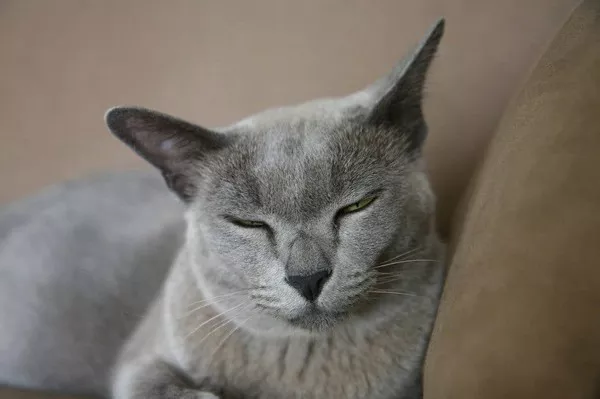Recent research reveals that Birmingham stands as one of the most cat-friendly cities nationwide. This assessment comes from LawnStarter, a lawn care service and research company, which evaluated the 200 largest cities in the United States and ranked them based on four distinct categories. These categories encompassed:
1. Access to Cats: Measured by the number of animal shelters per 100,000 residents and the prevalence of cat cafes.
2. Access to Pet Care: Including cat sitters, cat boarding facilities, cat-friendly veterinarians, and pet stores per 100,000 residents, along with the count of animal hospitals and emergency vets.
3. Housing and Accommodations: Encompassing average home square footage, the proportion of cat-friendly rental properties, and the presence of cat-friendly hotels per 100,000 residents.
4. Affordability: Evaluated by the average cat sitter rates per visit, state cat insurance premiums, and hotel pet fees.
Birmingham showcased a remarkable performance, securing the 17th place overall. It also secured spots in the top 20 within three of the four categories, particularly for access to cats through animal shelters, pet care accessibility, and housing and accommodations.
Sav Maive, a study storyteller for LawnStarter, commended Birmingham’s progress, stating, “Birmingham is demonstrating overall excellence. The city has even managed to introduce a cat cafe, a unique feature not yet prevalent in many other cities. Additionally, Birmingham ranks sixth in terms of the number of cat-friendly hotels and twelfth in the number of cat-friendly rental properties. This is undoubtedly beneficial for cat owners who travel or need to relocate. The city holds the third highest number of vets per 100,000 residents, a positive sign. Many cities encounter challenges in scheduling emergency appointments due to a shortage of veterinary services.”
Another Alabama city that fared well is Mobile, ranking 49th overall and even surpassing Birmingham in terms of access to cats.
“Mobile particularly stands out in terms of cat access,” Maive noted. “The city ranks fourth in terms of the number of animal shelters per capita, distinguishing itself both within Alabama and nationally. Access to animal shelters in Mobile is outstanding. Additionally, Mobile ranks eleventh in terms of the number of vets per capita. These factors are particularly significant for those looking to adopt a cat. Moreover, Mobile offers an abundance of cat-friendly hotels.”
However, while Birmingham and Mobile excelled, other Alabama cities fell behind. Huntsville and Montgomery failed to reach the top 100, securing 137th and 146th places, respectively. Maive attributed this to various factors.
“Huntsville and Montgomery faced challenges in multiple metrics, particularly in terms of animal shelters. Huntsville ranked 160th out of 200 cities in terms of the highest number of animal shelters per capita. Montgomery secured 110th place. This factor significantly impacted their rankings,” she explained. “Montgomery also lagged in three out of four categories, only performing well in cat-friendly housing and accommodations, ranking 46th overall. Additionally, Montgomery struggled with access to cat sitters and boarding facilities.”
Despite varying rankings, Maive highlighted a common issue across all Alabama cities: affordability. This pertains to Birmingham and Mobile as well, despite their notable accomplishments in terms of access to cats, pet care, and cat-friendly housing.
Out of all the cities analyzed, the affordability scores for each Alabama city were as follows:
Birmingham: 197 out of 200
Mobile: 189 out of 200
Huntsville: 193 out of 200
Montgomery: 184 out of 200
Maive elaborated on this issue, saying, “This may seem surprising at first glance. One might assume that Alabama would offer more affordability compared to places like San Francisco or Washington, where expenses are higher. However, this indicates that services such as cat sitters, cat insurance, and hotel pet fees are less accessible to typical Alabama residents than to those residing in more affluent areas. Individuals with higher salaries can better afford to invest in their pets, whereas those facing financial difficulties find it challenging to care for their pets.”
LawnStarter identified the top 10 cities for cat lovers as follows:
1. Orlando, Florida
2. Knoxville, Tennessee
3. Las Vegas, Nevada
4. Santa Rosa, California
5. St. Louis, Missouri
6. Richmond, Virginia
7. Scottsdale, Arizona
8. Atlanta, Georgia
9. Savannah, Georgia
10. Fort Collins, Colorado
“The top 10 cities are predominantly located in the Southern and Southwestern regions,” Maive observed. “These cities offer excellent access to adoptable cats, along with cat cafes that are perfect for individuals without cats but who wish to spend time with them. Moreover, these cities provide a range of pet care resources, from veterinarians to pet shops.”
Conversely, the 10 cities least favorable for cat lovers were:
1. Detroit, Michigan
2. Miramar, Florida
3. Springfield, Massachusetts
4. Hialeah, Florida
5. Paterson, New Jersey
6. Warren, Michigan
7. Newark, New Jersey
8. Bridgeport, Connecticut
9. Garden Grove, California
10. Laredo, Texas
“The bottom 10 consists of a mix of smaller cities and suburbs,” Maive pointed out. “While these cities are smaller, they lack sufficient animal shelters per capita and may not offer adequate access to veterinarians or cat-friendly rental properties, which are crucial for cat adoption.”
In conclusion, Maive underscored the surprising prominence of Florida in terms of cats and cat-related services.
“The rankings for Florida were intriguing,” she remarked. “Many Florida cities ranked at the top, including Orlando. Tampa secured the 11th spot, while Fort Lauderdale and Miami claimed places within the top 15. These cities boast exceptional access to adoptable cats, veterinarians, and other cat-related care services. However, they fall behind in terms of pet-friendly rentals and accommodations for services such as boarding and cat sitters. Florida cities appear to offer more cat-friendly options for vacationers rather than permanent residents.”
For cities with lower rankings like Huntsville and Montgomery, Maive suggested strategies to attract cat lovers.
“Access to animal shelters holds significant importance. Shelters are often overwhelmed in various areas, making it a national issue. Thus, increasing the number of shelters is a positive step,” she advised. “Encouraging businesses like cat cafes to establish themselves is also beneficial. These cafes are trendy and often offer adoption services. While suggesting the need for more veterinarians in a city might be challenging to implement, access to pet care remains crucial. While supplies can be ordered online, veterinary services and pet examinations require physical presence. To create a more pet-friendly environment, it’s essential to allow residents to have pets within their homes.”
This marks LawnStarter’s third iteration of its study on the most cat-friendly cities. Maive shared that the study initially aimed to stimulate discussion and provide both reporters and readers with a lighter news topic. Interested readers can access the complete LawnStarter study for further information.























